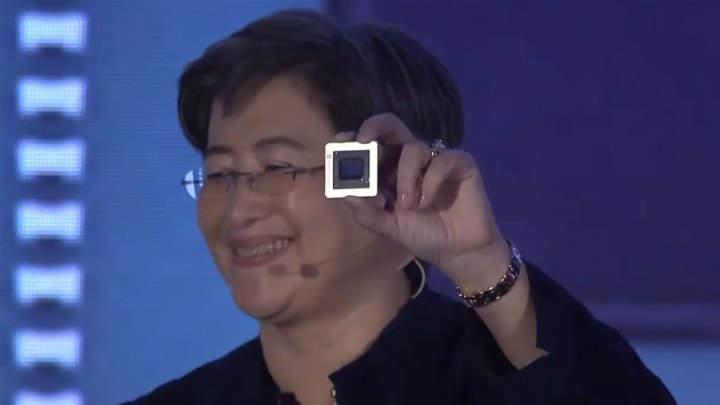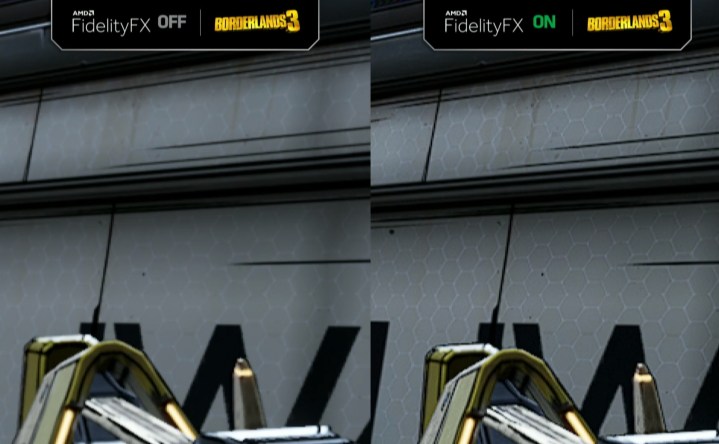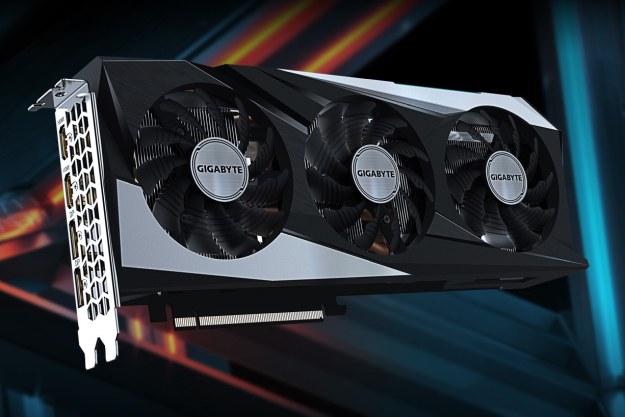After releasing its high-end Radeon VII in February 2019, AMD turned its (and our) attention to the midrange market with its 7nm Navi graphics cards, now officially named the RX 5000 series. Navi plays to AMD’s strength: Making high-end graphical power more affordable than ever.
AMD initially debuted the Navi-based Radeon RX 5000 series at Computex, before releasing the RX 5700 and RX 5700 XT in July alongside its stellar Ryzen 3000 CPUs. It later announced the Radeon RX 5500, but expanded that to include an OEM option, as well as a 4GB and 8GB version of the card for DIY enthusiasts, and a 5500m GPU for laptops.
Whereas Nvidia is playing up the strength of ray tracing on its RTX and GTX 16-series graphics cards, AMD’s focus this generation has been on raw power and affordability. The RX Navi 5000 graphics cards offer fantastic value for money.

Pricing and availability
AMD’s Radeon RX 5700 and 5700 XT officially launched on July 7, a date chosen to celebrate the 7nm architecture for which these chips are based upon. AMD initially played some pricing games with Nvidia, announcing one price and then correcting it down after Nvidia announced its RTX Super cards. After some further fluctuation since launch, AMD’s RX 5700 is now priced at $330, where the 5700 XT starts at $400 and ranges up to $500 depending on the version you opt for. The RX 5700 XT anniversary edition is still available directly from AMD for $450.
All new cards also come with free Xbox Game Pass for PC for three months, and copies of Borderlands 3 and Tom Clancy’s Ghost Recon Breakpoint.
The RX 5500 was announced in October with no clear release date. It’s expected before the end of the year, though, with a price around $150.
AMD is also thought to be working on a “big Navi” graphics card with more stream processors than the 5700 XT and potentially more memory too. Such a card could rival Nvidia RTX 2080 or 2080 Ti performance, but isn’t expected to make an appearance until sometime in 2020. At that point it may need to face off against Nvidia’s next-generation Ampere GPUs.
Architecture and performance

All three graphics cards in the Radeon RX 5700 family are based on AMD’s 7nm process. The new architecture built on that, known as RDNA, moves beyond AMD’s aging Graphics Core Next architecture. It will form the basis for AMD graphics cards for the next 10 years.
RDNA is said to offer major architectural improvements over GCN and the Vega chips that came before. It features an entirely new “compute unit design” for improved efficiency and instructions per clock (IPC). It also features a multilevel cache hierarchy, which reduces latency and allows for greater bandwidth and a reduction in power draw. There have also been optimizations that help boost clock speed.
With 36 compute units on the standard RX 5700, this GPU delivers up to 7.95 teraflops of raw graphical power. The XT model goes even further, managing nearly two more teraflops with 40 compute units, and both models take advantage of speedy 8GB GDDR6 memory. The standard RX 5700 has a clock speed of 1,465MHx that can go as high as 1,725MHz, while the XT model starts at 1,605MHz and goes up to 1,905MHz when boosted, temperature depending.
At Computex, AMD’s demo showed that the RX 5700 performed by as much as 10% better than the competing RTX 2070. That would make it around 25% to 30% quicker than an AMD Vega 64 and only a few percentage points less capable than a Radeon VII. It wasn’t quite that capable in our testing, but it was still a strong performer. We saw the 5700 XT compete favorably with the Radeon VII and Nvidia’s RTX 2060 Super and RTX 2070. The 5700 was closer to the RTX 2060, but at a lower price.
The Navi architecture won’t be limited to just PC gamers. AMD announced that custom variants of its RDNA-based graphics will also be headed to consoles made by Sony and Microsoft. In April 2019, Sony’s lead PlayStation architect, Mark Cerny confirmed that the next-generation PlayStation console would use a custom Navi graphics core alongside an AMD Ryzen 3000 CPU based on its Zen 2 architecture. During an interview, Cerny stated that the new PlayStation will support 8K graphics with ray tracing capabilities along with 3D audio.
The PS4 and PS4 Pro used an APU design and that looks likely to be the case with the PS5, also.
Like Sony’s next-generation console, Microsoft announced at E3 that its next-generation Xbox console will utilize a custom AMD solution based on the 7nm Zen 2 processor and Navi graphics too. The system is currently known as the Xbox Series X, although Microsoft has said it will just be called “Xbox.” The APU inside it has been co-designed and co-engineered by the two companies to bring 8K graphics and ray tracing into the living room. Like the Radeon RX 5700, Microsoft confirmed that its custom solution will also use fast GDDR6 memory, and this chip will be capable of supporting up to 120 FPS games with variable refresh rates.
Image sharpening
Despite the strong performance of the RX 5700 graphics, some features found on rival architectures are noticeably absent from the Navi architecture, like variable rate shading, or VRS, and foveated rendering. But AMD does boast its own sharpening tool called Radeon Image Sharpening, which helps upscale elements of an image to make it look sharper.
With Radeon Image Sharpening enabled, the software will increase the sharpness and details in a game in an effort to boost image quality. Taking a jab at Nvidia, AMD claimed that it’s not launching a feature to hurt a game’s performance and do trickery to boost the resolution that ends up only making scenes appear blurry. Radeon Image Sharpening has a similar performance impact to sharpening post-processing with the likes of ReShade or SweetFX.
Radeon Image Sharpening works by examining high contrast areas of a scene, pulling out highlights from dark shadows without affecting any anti-aliasing softening in the image’s brighter areas. The result of this sharpening makes 1080p images look closer to 1440p, and the feature’s ability to upscale an image is competitive with deep learning supersampling, or DLSS, on Nvidia’s chips. Radeon Image Sharpening is currently available for DirectX 9, DirectX 12, and Vulkan, with DirectX 11 support missing right now. It works on RX 5700 cards, as well as some Polaris cards, like the RX 500-series, as well as Vega 56 and 64 GPUs.
Cinematic visuals
AMD is pushing for more realism when it comes to gaming, and it wants to bring cinematic rendering quality to gaming. With the RX 5700 GPU, AMD also announced the Radeon Media Engine, which supports 4K encode and decode, as well as precinct HDR (PHDR) support.
Game developers also have access to AMD’s FidelityFX APIs, which adds more details and increased sharpness to low contrast areas in a game. The feature works in a similar way to Radeon Image Sharpening, but gives developers more control. Whereas Radeon Image Sharpening can be enabled with just a switch as an all-or-nothing solution, FidelityFX must be implemented within the game.
The feature was demonstrated at E3 on Borderlands 3, showing more details to the honeycomb pattern in the license plate on a car.

Another feature that is supported on the RX 5700 is Radeon Anti-Lag, which is designed for eSports and competitive gaming. This feature helps reduce the input lag between a gamer’s actions and them manifesting in-game.
Known more formally as motion-to-photon latency, this lag is typically four frames — or about 60 milliseconds from the time you press a button to when the action is registered onscreen — on a game played at 60 fps. When the Anti-Lag feature is enabled, the lag is reduced to about 44 milliseconds on the RX 5700 XT. Latency is reduced by 31% across popular eSports titles, according to AMD, and by as much as 35% in Fortnite.
No ray tracing for now

AMD originally stated that it wouldn’t be supporting ray tracing, which has been a hallmark of Nvidia’s RTX series; At least, not yet. “Utilization of ray tracing games will not proceed unless we can offer ray tracing in all product ranges from low end to high end,” David Wang, AMD’s senior vice president of engineering at the Radeon Technologies Group, told 4Gamer in an interview at the end of 2018. At the end of 2019, we still don’t have a firm grasp of AMD’s ray tracing plans.
For now, AMD claims to be focusing its efforts on features that developers want, like better image quality through tools like FidelityFX. Though AMD is publicly not announcing its support for ray tracing, we do know that the company’s custom Navi cards for the next-generation XBox and PlayStation consoles, due in 2020, will support this feature.
At CES 2019, CEO Lisa Su did state that AMD was “deep in development” on ray tracing technology. Given the performance hit on games that support this Nvidia-exclusive feature so far, AMD is likely waiting until it can make ray tracing less taxing on the GPU. AMD could also be waiting for more games to support ray tracing before making this feature available on its GPUs.
Editors' Recommendations
- GPU prices are back on the rise again
- AMD’s GPUs had a bigger year in 2023 than you might realize
- Nvidia is the ‘GPU cartel,’ says former AMD Radeon manager
- Here’s how AMD counters Nvidia’s big RTX Super launch
- AMD just announced the graphics card everyone has been waiting for



